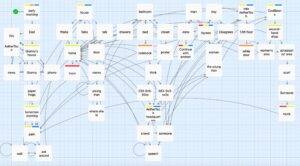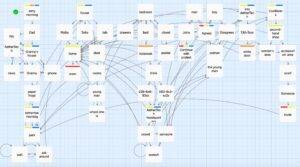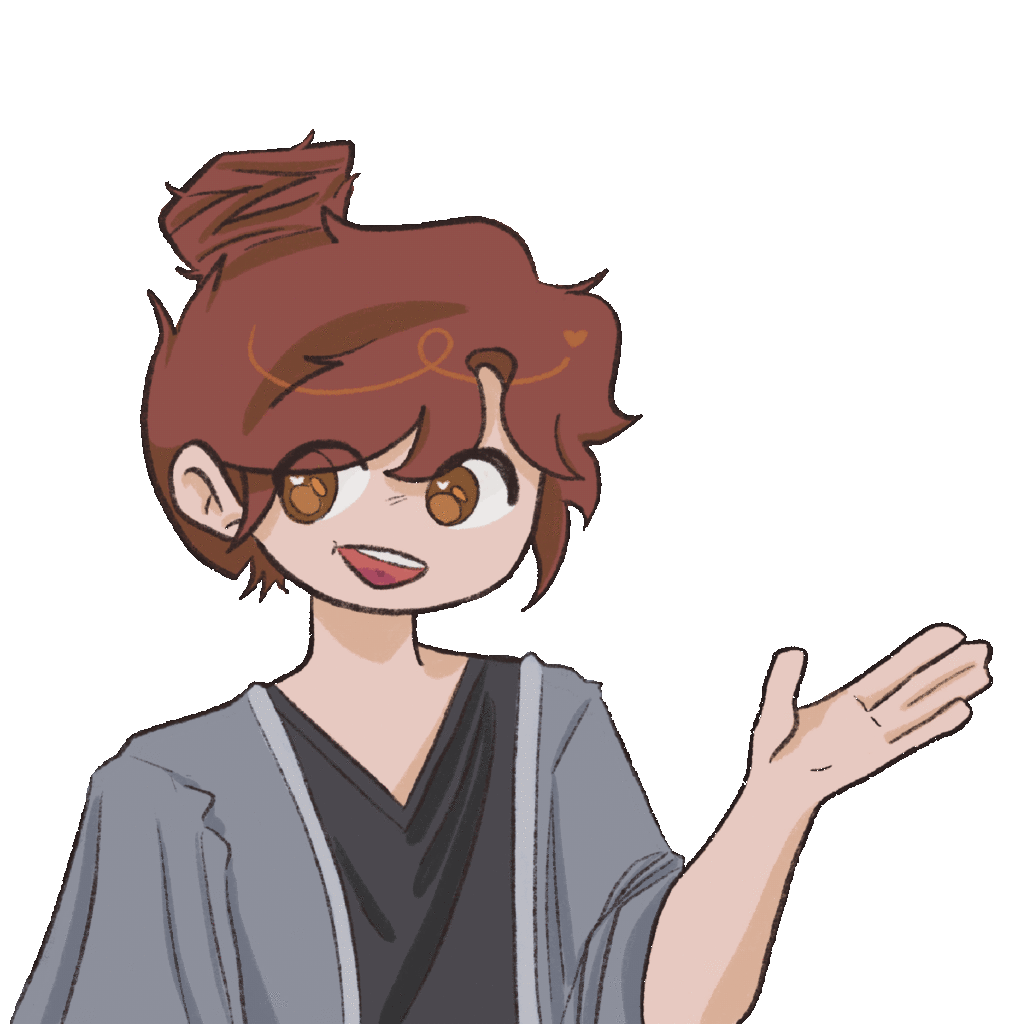Game Link
https://00grace00.itch.io/2072
Overview
2072 is an interactive fiction game developed in Twine. The game originates from a conversation about whether AI will take over jobs in the future and which jobs it may take over. I, different from my dad, believe that AI will remain a tool for humans. However, I wonder what the future might look like if AI was not used for good. The story depicts the world in 2072, and our main character, an 11-year-old girl sets out on her journey to look for her granny, who has disappeared. Through this story, the little girl interacts with people from different perspectives, only to realize that she might be powerless towards monopoly.
The plot of the story was developed in a previous project (https://mechanicsofmagic.com/2024/11/02/p2-2072/). For this project, I intentionally focused on features other than the plot, playing with how these features can work with the plot and create an immersive experience. For my personal goal, I also would like to learn to use Twine more: gamified learning seems to be a possible route for my master’s project due to its ability to simulate real-life experiences and allow players to learn about the potential consequences of their actions. Thus, I focused on pictures, text effects, and background music for a better presentation of 2072.
Features
Pictures were searched and pulled from Google and Baidu. In 2072, pictures helped to set the physical space, providing the readers with a clue about where the character is located. At first, attempts were made, asking ChatGPT to provide images for the story. However, after a few tries, ChatGPT doesn’t create the images I already have in mind. Hence, images were pulled from the web.
Background music was also put in to set up the space. For every location that the main character visits (i.e. home, granny’s home, park, coffee shop, second-hand store, outside of AetherTech, and inside of AetherTech), a piece of audio was selected to play while the main character remains in that space. In particular, the audio for the second-hand store and that of the inside of AetherTech were the same, matching the plot that the second-hand store is a place run by AetherTech.
Special text effects were added to the story, but it appears less frequently. First, in place of the tutorial, a moving effect was added to the first interactive element, “Dad”. The moving effect only becomes visible if the player does not move on to the next page for 5 seconds, allowing the players that never interacted with Twine a clue for how to continue. Additionally, When the main character views the notebook that Granny holds, the names in the notebook are now in columns, simulating how things may be written in a notebook. Last but not least, in one of the endings, when the main character was told to head home by the leader of AetherTech, the choice of going home would not show until the player clicks on the “correct path”, a clearer presentation that the “correct path” the main character should take, according to AetherTech, is to go home.
Playtests & Historical Versions
Version 1
At first, only pictures were added. Pictures were put at the beginning of a passage where traveling took place. The yellow markers identified where the pictures were inserted. This version was tested with a female student, Student S, in class. The feedback given was: 1) pictures are different sizes, which makes the game look bad; 2) watermarks on the pictures were disrupting the game flow. Responding to this feedback, I changed the sizes of the images to make sure their sizes are similar, if not the same, to each other. Because the watermarks are in Chinese, I feel that this is a minor element: the intended audience for this game is very unlikely to be fluent in Chinese, so they might overlook the watermark instead.

Version 2
In addition to the changes mentioned above, the second version of the game also included some text effects, indicated by the orange markers. The text effects implemented are the one for the tutorial and the one for the notebook. This version was tested with a male student, Studnet J, in class. While playing the game, the player was excited about the door of Granny’s house has an electric lock on there. Having some experience with Chinese, his attention was also directed to the watermarks, but it didn’t seem to interrupt the game flow. He questioned one of the images, asking why the character’s home (plot) is paired with the grocery store (picture). Lastly, Student J attempted to call the two phone numbers presented in the game.
In response to this playtest, I changed the picture of the grocery store to another picture of a door, making sure that this confusion does not occur again. Because of the exclamation of electric locks, I made sure that the main character’s home also had electric locks on it. I also blurred out part of the phone number with “x”, making sure that the phone numbers would not be attempted by players.

Version 3
In addition to the changes mentioned above, I added the final text effect, providing a clearer link with the choice “going home” and “the correct path.” This version of the game was tested with Student H, a female PhD candidate at GSE. The tutorial worked, showing her where to click. She also mentioned liking the pictures and feeling that it is a great add-on. Although this player is an international Chinese student, she didn’t seem to be bothered by the watermarks. After playtesting, she wondered if pictures of the characters could be added to the story.
Eventually, however, I decided against it. Because I don’t know which identity my players may hold, I don’t want to assume for the players who they are. Hence, this playtest didn’t produce any changes to the images.
Since images and text effects had many chances for playtesting, I moved into music. After some struggles with adding background music, I inserted four audio clips: one for the protest outside of AetherTech, one for the inside of AetherTech, one for the park, and one as placeholders for everywhere else.

Version 4
Then, the game was playtested by Student A, a male student in the LDT program. This student has spoken to me in Mandarin Chinese before, but he didn’t seem to be bothered by the watermarks. In fact, he claimed that the pictures were fine. He did mention, however, the lack of change in music. The whole beginning, even though the character moves between her home and granny’s home, contains no change in background music.
In response to this, another audio was searched for Granny’s home. The blue markers mark the locations where the audio changes.

Version 5
After the change, Student M, a female student in the LDT program, played the game. The student expressed liking the sounds, agreeing that the sounds helped to set up the scene. A mistake that she pointed out was that there was a mismatch between the music and the picture, where the music started playing before the image was displayed. In response to this, I altered the code so that the two appeared simultaneously.

Version 6
The game was then played by Student Z, a female student at USC. Having played the game before these edits, she was positively surprised by the changes. However, she expressed that she would love for more audio changes, especially by the end of the game. In response to this, I searched for and added audio clips for the coffee shop and the second-hand store. By now, my game has been completed.


